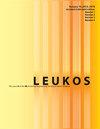窗景质量:为什么重要,我们应该做什么
IF 2.6
2区 工程技术
Q2 CONSTRUCTION & BUILDING TECHNOLOGY
引用次数: 11
摘要
提供与室外视觉联系的窗户景观已被证明对居住者有多种积极影响(Heschong 2021)。这些影响包括改善健康、幸福感(Beute and de Kort 2014)、情绪(Ko et al. 2020)、认知表现(Boubekri et al. 2020;Jamrozik et al. 2019;Ko et al. 2020),环境满意度(Yildirim et al. 2007),减少不适(Aries et al. 2010)和压力恢复(Ulrich 1984)。良好的窗户景观也可能增加建筑物的经济价值(Baranzini和Schaerer 2011;Damigos and Anyfantis 2011;Turan et al. 2021)。尽管人们已经认识到窗户景观的许多好处,但很少有评估窗户景观质量的设计指南(CEN/TC 169, CEN/TC 169 2018;IWBI 2020;USGBC 2019)。此外,所提出的方法往往没有得到全面和结论性研究结果的支持。尽管现有的研究已经尝试使用各种评估方法来评估窗景质量(Hellinga and Hordijk 2014;李和萨缪尔森2020;Mardaljevic 2019;Matusiak and Klöckner 2016;Turan et al. 2021),方法之间几乎没有一致性,这些研究中的每一项都只部分解决了窗户、室外和室内条件以及居住者之间的复杂关系(Ko et al. 2021;Waczynska et al. 2020)。对于适用于不同占用率和建筑类型的窗景质量的统一定义,我们缺乏共识。此外,尽管这是一个越来越受关注的话题,但由于其复杂性、资金不足以及缺乏协调一致的努力,正在进行的研究有限。针对这些问题,本社论的一些作者于2021年10月28日在加州大学伯克利分校参加了一个关于窗户景观质量的研讨会,这是对与窗户景观相关的研究和设计实践虚拟研讨会(“Symposium on Research and Design Practice Related to window Views”2021)的补充。这一立场声明是在这次研讨会上形成的。研讨会的目的是提高利益相关者对窗户景观的好处、复杂性和评估方法的兴趣和理解。研讨会旨在让建筑科学和设计界参与这一不断发展的领域,就窗户景观质量的主要组成部分达成共识,并确定当前景观评估方法的研究差距。本文章由计算机程序翻译,如有差异,请以英文原文为准。
Window View Quality: Why It Matters and What We Should Do
Window views that provide visual connections to the outdoors have been shown to have multiple positive effects on occupants (Heschong 2021). These effects include improved health, well-being (Beute and de Kort 2014), emotion (Ko et al. 2020), cognitive performance (Boubekri et al. 2020; Jamrozik et al. 2019; Ko et al. 2020), environmental satisfaction (Yildirim et al. 2007), reduced discomfort (Aries et al. 2010) and stress recovery (Ulrich 1984). A good window view may also increase the economic value of buildings (Baranzini and Schaerer 2011; Damigos and Anyfantis 2011; Turan et al. 2021). Even though many benefits from window views have been recognized, there are few design guidelines for assessing window view quality (CEN/TC 169, CEN/TC 169 2018; IWBI 2020; USGBC 2019). Moreover, the proposed approaches are not often supported by comprehensive and conclusive research findings. Although existing research has attempted to evaluate window view quality using a variety of assessment methods (Hellinga and Hordijk 2014; Li and Samuelson 2020; Mardaljevic 2019; Matusiak and Klöckner 2016; Turan et al. 2021), there is little alignment between methodologies and each of these studies only partially addresses the complex relationships between windows, outdoor and indoor conditions, and occupants (Ko et al. 2021; Waczynska et al. 2020). We lack consensus on a unified definition for window view quality that is applicable across occupancies and building types. In addition, while this is a topic of growing interest, there is limited research underway due to its complex nature, insufficient funding, and a lack of coordinated effort to move the field forward. In response to these problems, some of the authors of this editorial participated in a workshop on window view quality on October 28, 2021 at the University of California, Berkeley, which was complementary to a Virtual Symposium on Research and Design Practice Related to Window Views (“Symposium on Research and Design Practice Related to Window Views” 2021). This position statement started to take shape during this workshop. The symposium aimed to enhance interest and understanding among stakeholders regarding the benefits, complexities, and assessment methods for window views. The workshop aimed to engage the building science and design communities in this growing field, reach a consensus on the primary components of window view quality, and identify research gaps in current view assessment methods.
求助全文
通过发布文献求助,成功后即可免费获取论文全文。
去求助
来源期刊

Leukos
工程技术-光学
CiteScore
7.60
自引率
5.60%
发文量
19
审稿时长
>12 weeks
期刊介绍:
The Illuminating Engineering Society of North America and our publisher Taylor & Francis make every effort to ensure the accuracy of all the information (the "Content") contained in our publications. However, The Illuminating Engineering Society of North America and our publisher Taylor & Francis, our agents, and our licensors make no representations or warranties whatsoever as to the accuracy, completeness, or suitability for any purpose of the Content. Any opinions and views expressed in this publication are the opinions and views of the authors, and are not the views of or endorsed by The Illuminating Engineering Society of North America and our publisher Taylor & Francis. The accuracy of the Content should not be relied upon and should be independently verified with primary sources of information. The Illuminating Engineering Society of North America and our publisher Taylor & Francis shall not be liable for any losses, actions, claims, proceedings, demands, costs, expenses, damages, and other liabilities whatsoever or howsoever caused arising directly or indirectly in connection with, in relation to, or arising out of the use of the Content. Terms & Conditions of access and use can be found at http://www.tandfonline.com/page/terms-and-conditions .
 求助内容:
求助内容: 应助结果提醒方式:
应助结果提醒方式:


